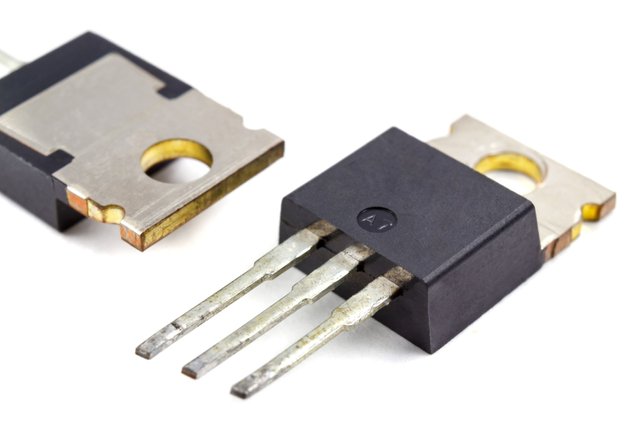THE DAIRY GAME :12/11/2021-"MY FIRST PRACTICAL ON THE OUTPUT CHARACTERISTIC OF A TRANSISTOR"
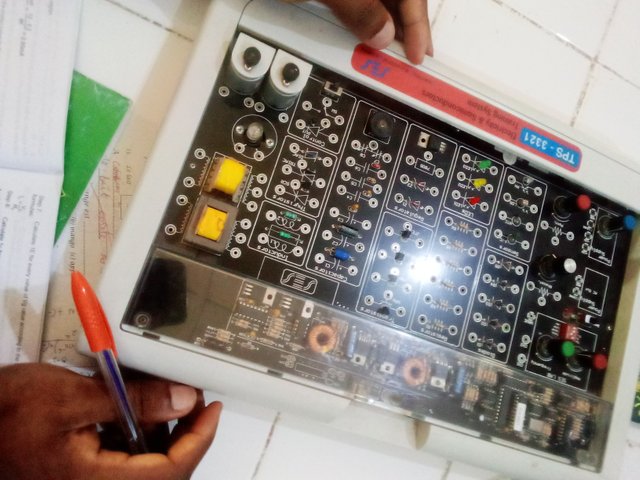
Hy steemians,how are you guys doing.i want to use this wonderful opportunity to share my experience on my first practical on the output characteristic of a transistor...first of all
WHAT IS A TRANSISTOR???
A transistor is an electronic three terminal device made from semiconductor that can be used to amplify signals
TYPES OF TRANSISTOR
1: Bipolar junction transistor
2: field effect transistor
3: metal oxide semiconductor field effect transistor (MOSFET)
4; Junction field effect transistor (JFET)
USES OF TRANSISTOR
Transistor finds many application in the electronic and electrical Industry of which few among them are
1: it is used to amplify current
2; it acts as switch
3; it is also used to amplify AC signals
OUTPUT CHARACTERISTICS OF A TRANSISTOR
.png) source
source
From the graph above,we can see that the output characteristic of the transistor shows the relationship between the output current Ic(collector current) and the output voltage Vce(collector emitter voltage) when the input current Ib(base current)is kept constant.
From the graph above,we can also see that we have three regions..viz;
i; active region
ii; saturation region
iii; cut off region
We can also see that the collector current (Ic) is dependent on the base current (Ib) and the output voltage (Vce)
In other to perform this practical,we need various equipments of which I will state below..
I: digital multimeter
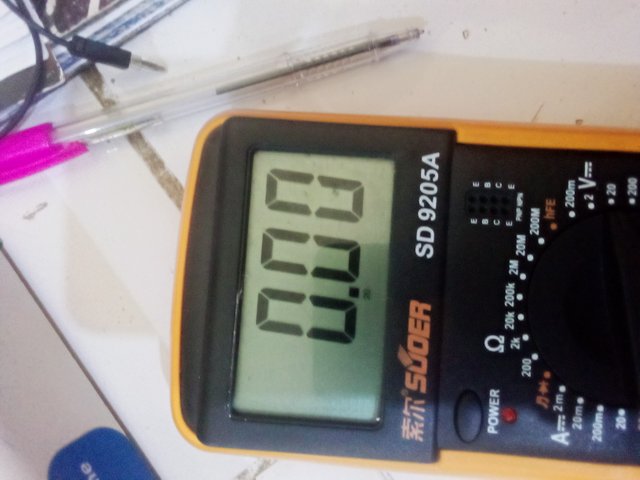
ii:Adopter
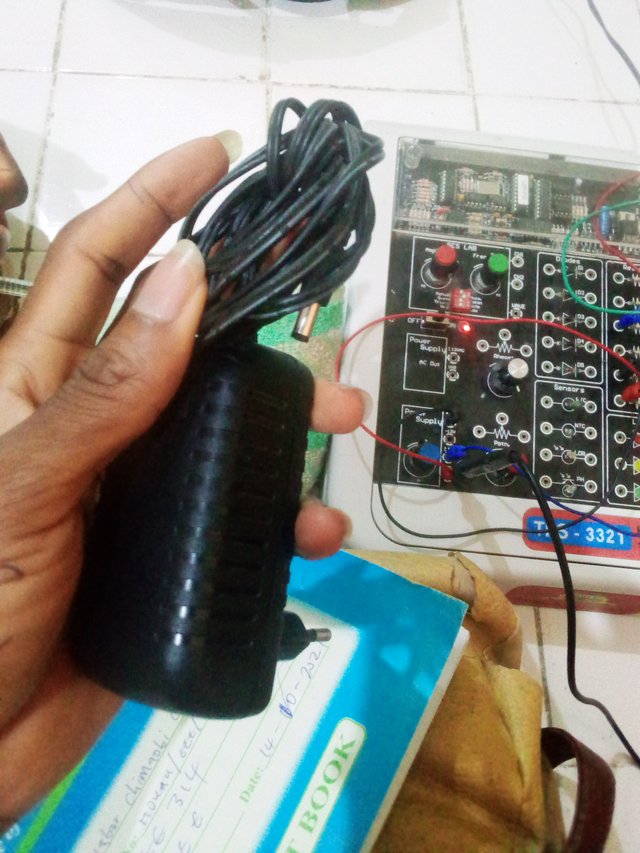
III; Trainers

3; banana wires
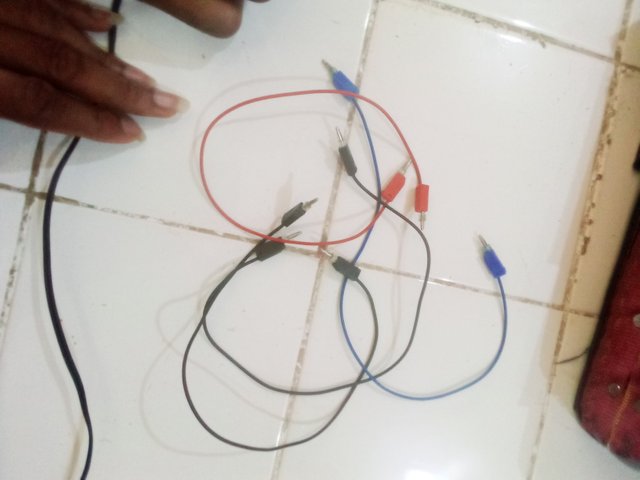
4;
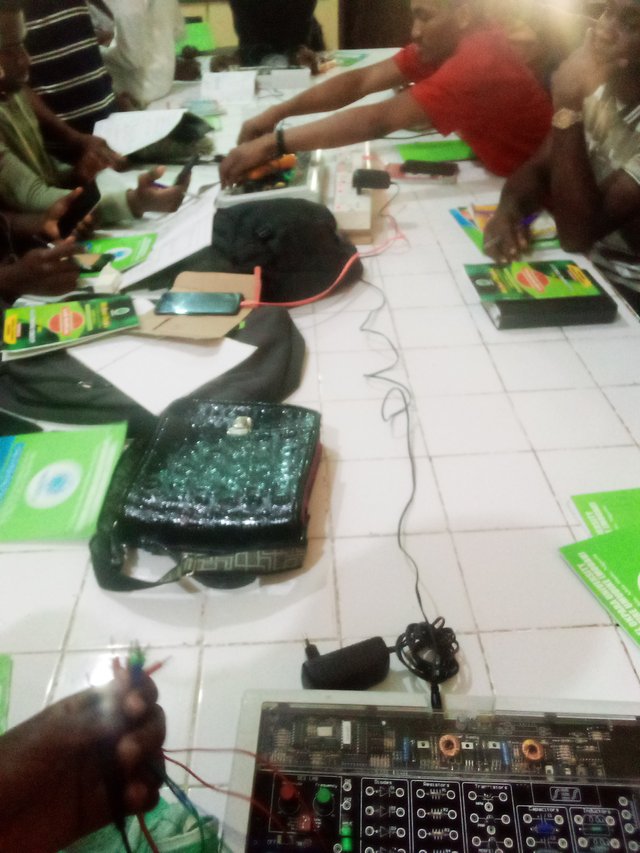
HOW TO PERFORM THE PRACTICAL
For this practical,we will be considering an NPN transistor.
1;put one one terminal of the banana wires on the base of the NPN TRANSISTOR as shown below
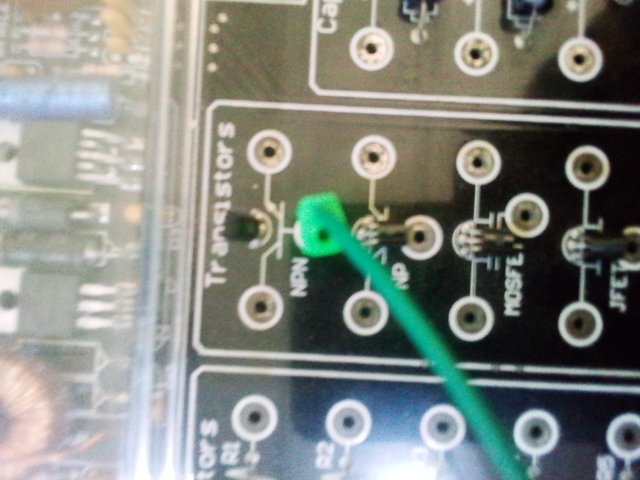
2; connect the second terminal of the banana wire to one of the terminal of a 10k ohms resistor labelled "R3"
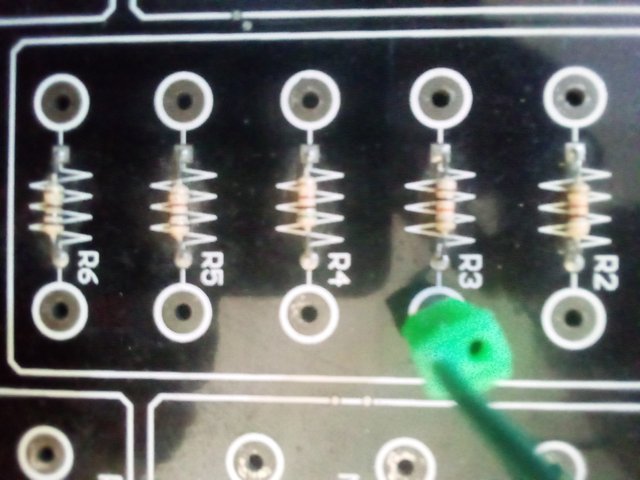
3; connect another wire from the other terminal of the 10k ohms resistor to (+/-) voltage source
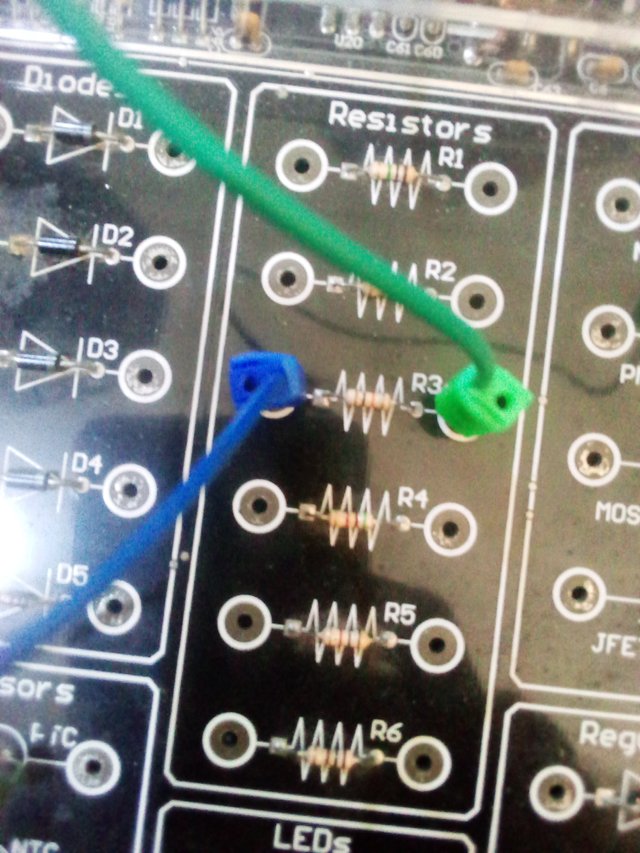
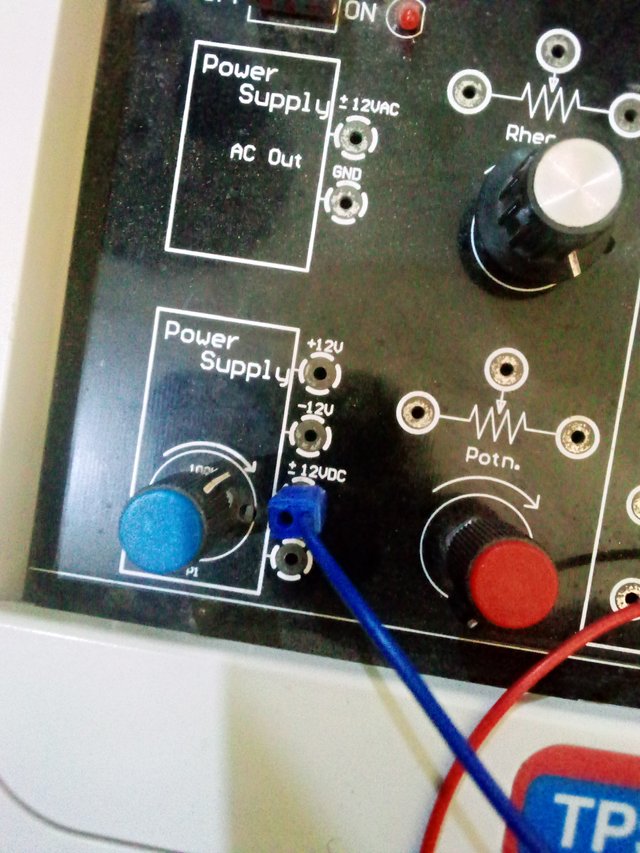
4: put another banana wire from the collector of the transistor to one of the terminals of the 1k ohms resistor labelled "R5"
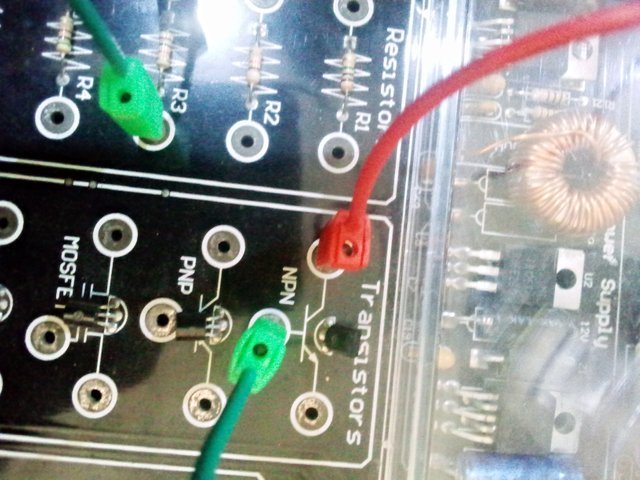
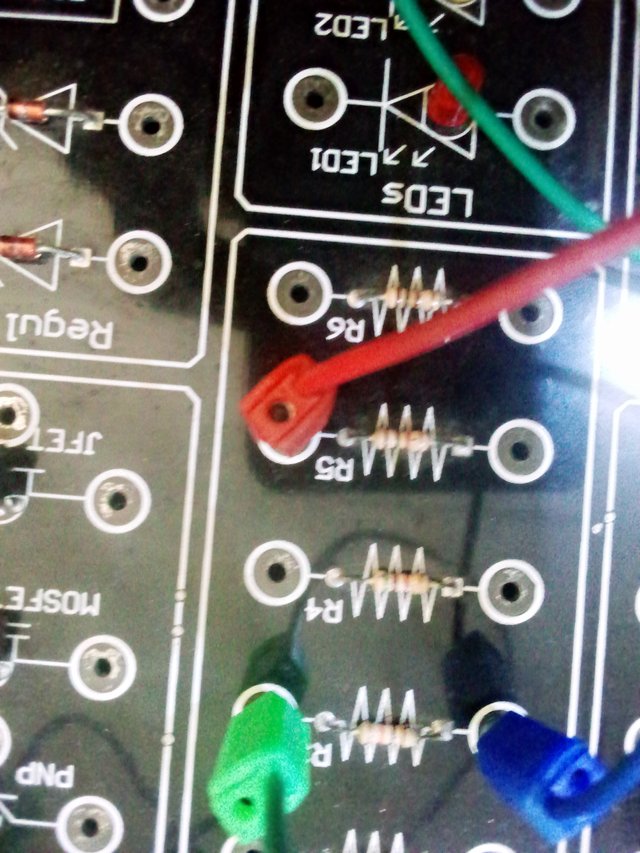
5; then connect the second terminal of the 1k ohms resistor to the +12v DC source
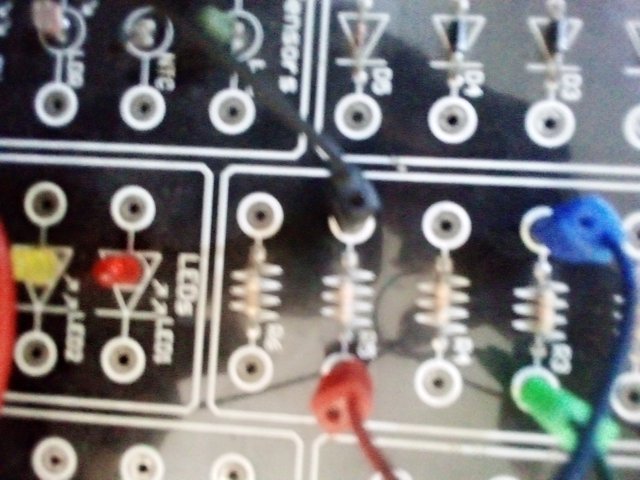
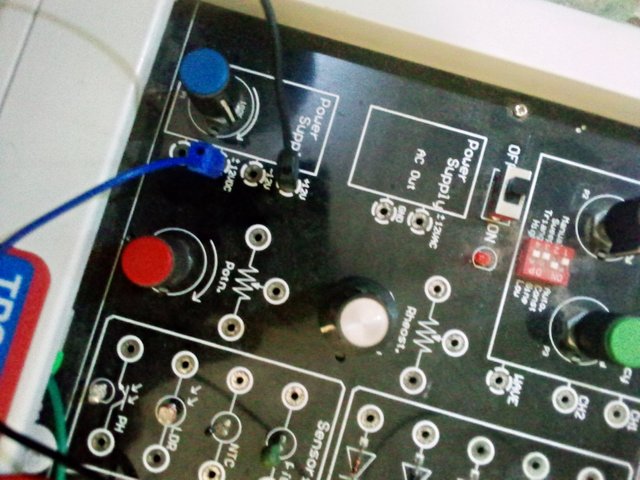
6: connect the emitter of the transistor to one of the terminals of the 100 ohms resistor labelled "R6".
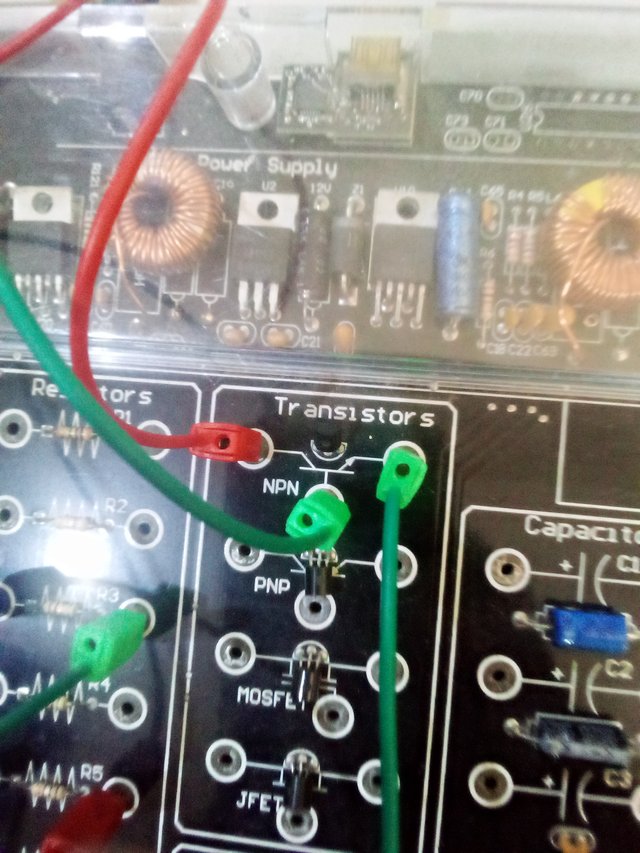
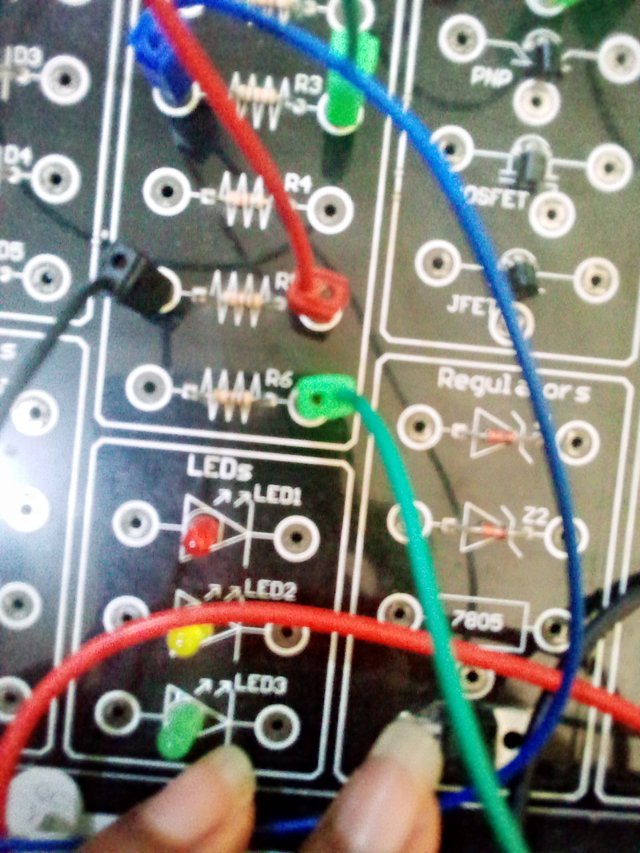
then connect the other terminal of the 100 ohms resistor the ground of the trainer
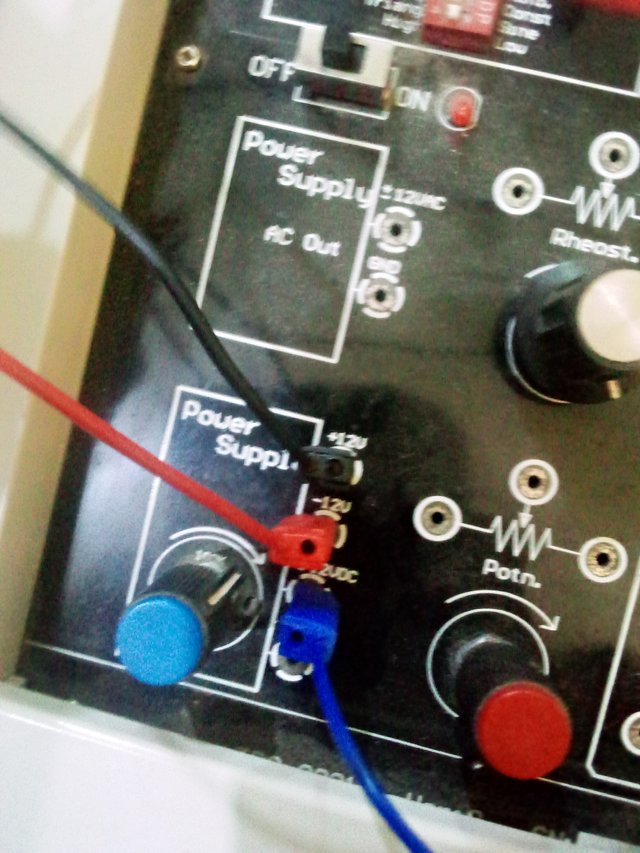
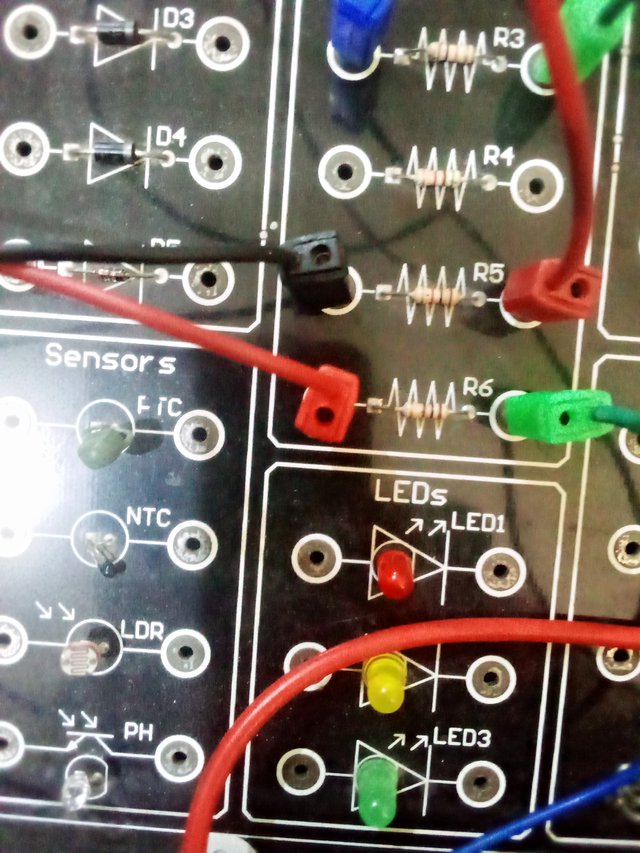
After this connections we now used a multimeter to measure the voltages across the base,emitter and collector.
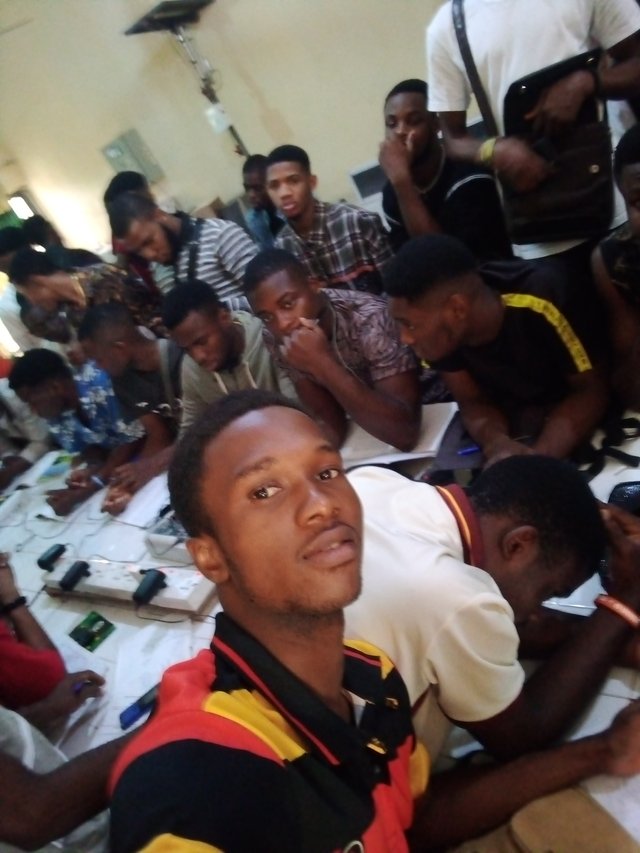
During the practical session
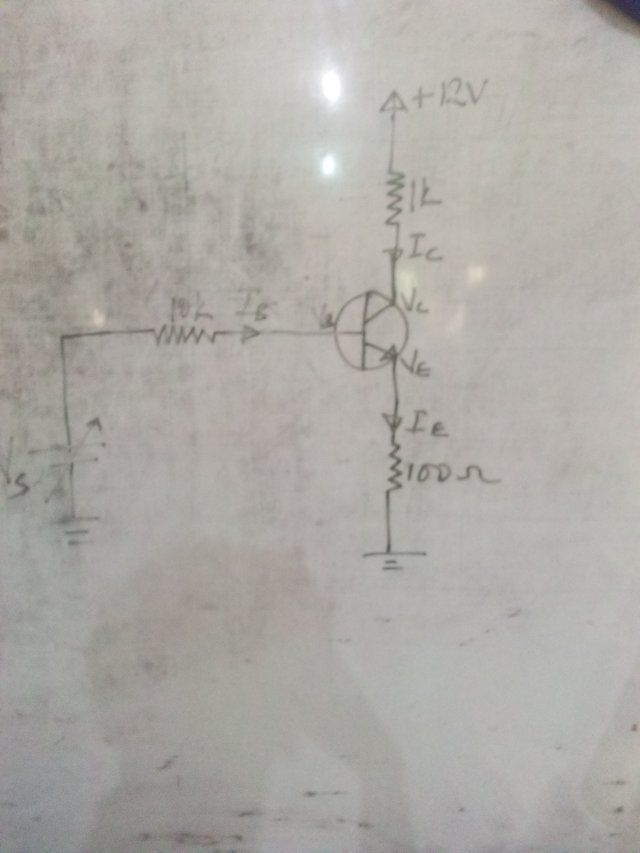
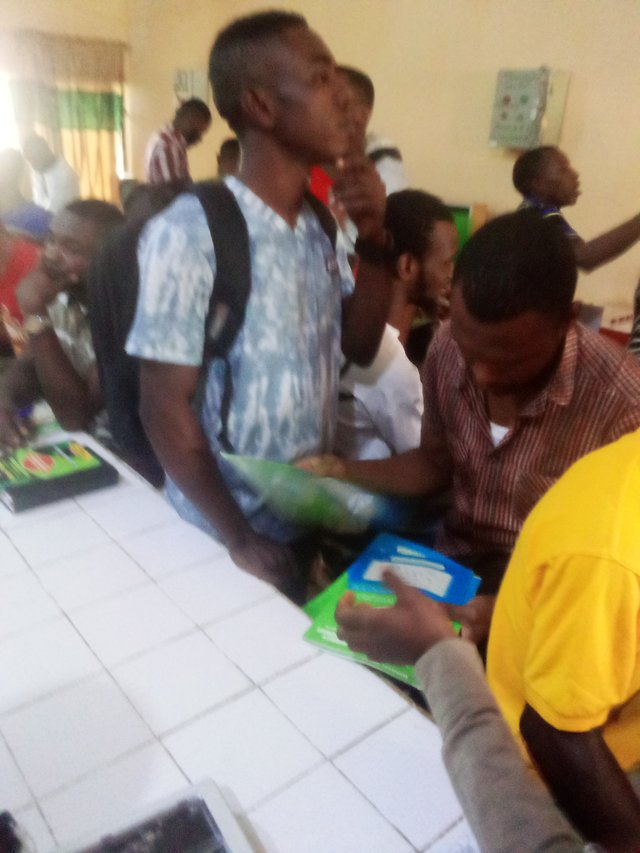
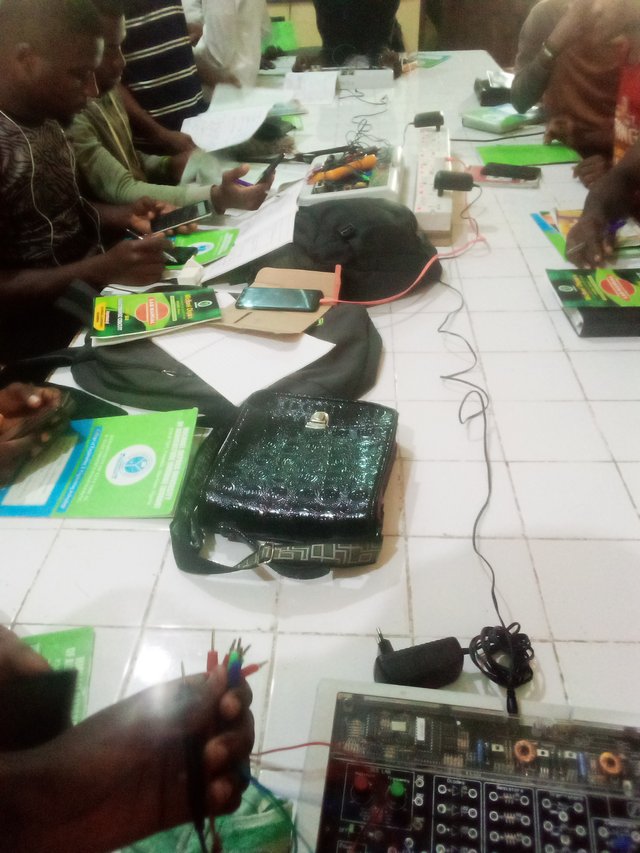
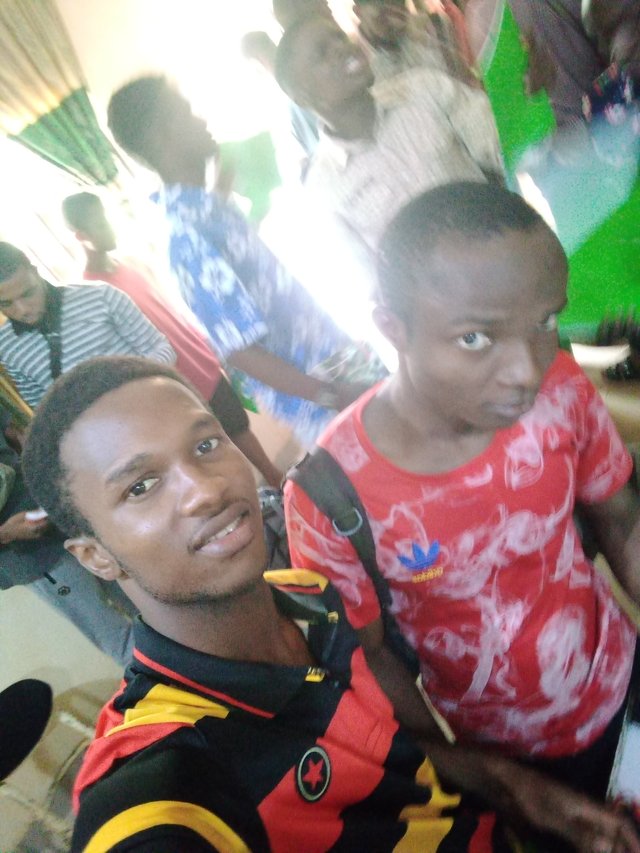
With my friend @paulbe
Thanks you guys for taking your time to read my post.i really appreciate..
